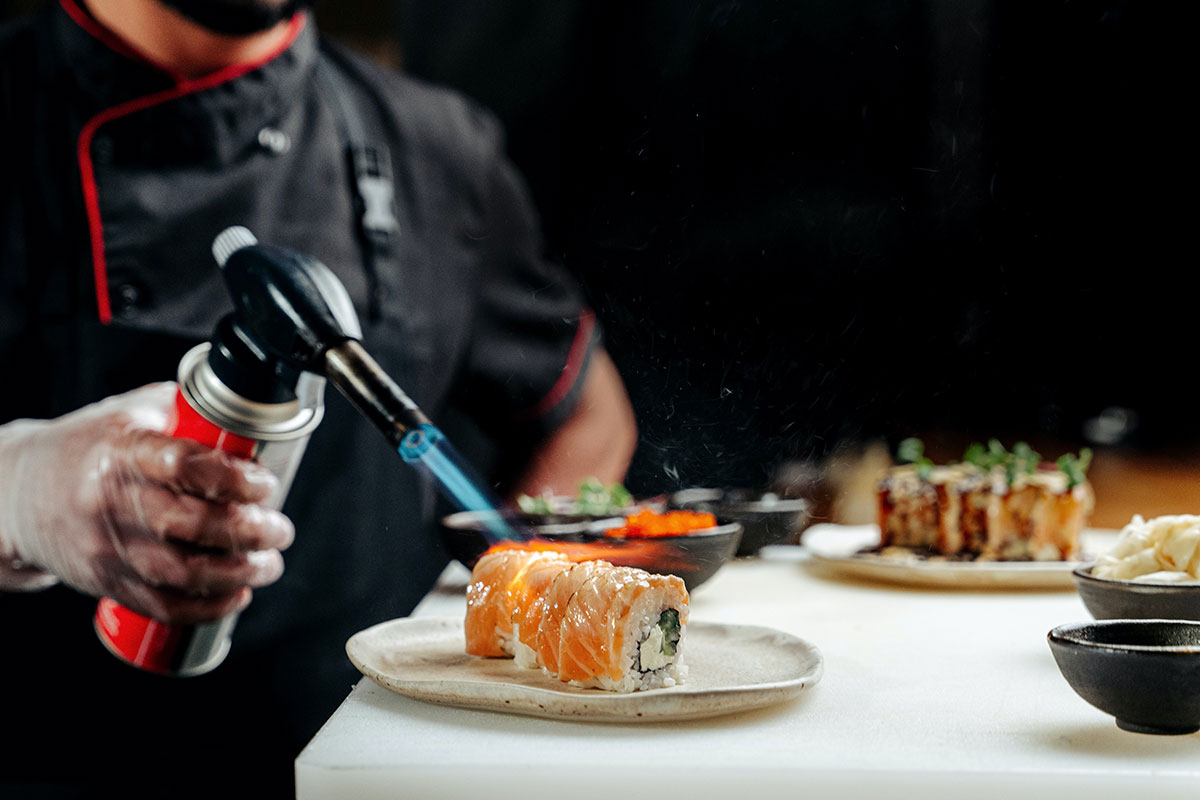Disclaimer: The information on our website is provided for general information purposes only. We make no representations or warranties of any kind, express or implied, about the completeness, accuracy, reliability, suitability or availability with respect to the website or the information contained on our website for any purpose. Any reliance on such information is therefore strictly at your own risk and we are not liable for any damages or losses arising out of or resulting from your reliance on any information contained on our website.
An Itamae Sushi Chef is a highly trained, fully authorized Chef that makes Japanese sushi. Additionally, these chefs learn their trade under the supervision of a Master Sushi Chef for 10-20 years. In fact, the word Itamae translates to, “in front of the board, cutting board.” Next, watch a video to learn more about this career field.
How to Become a Itamae Sushi Chef

Many people enter the culinary arts program and then work as an apprentice under the supervision of a sushi chef. No certification is required to become a sushi chef. However, certificates are available and recommended in Asian countries. Such certifications include the Professional Sushi Skills certification, Sushi Proficiency Certification, and Certified Master in sushi. It is necessary to take a seminar class and pass a proficiency exam to get these certificates.
It is vital to work as an apprentice under the supervision of a Master in sushi to become respected and highly skilled. The apprentice must learn and become skilled in handling food, utensils, knives, and how to treat clients. The apprentice typically works for one year before they are assigned more responsibility to make sushi. For example, they may be responsible to prepare sushi rice. Preparing rice may not sound like much, but making sushi is about skill and every element must be perfected.
Itamae Sushi Chefs are typically strict and very serious about the food they serve. Therefore, an apprentice spends the first year cleaning and learning about different kinds of fish, and usually does not touch the food. The apprentice spends about five years learning about the art of making sushi as their duties expand. Advancement to a more prominent position known as wakiita, means, “next to the board.” Once this takes place, duties expand to daily sushi preparation. Promotion to Itamae Sushi Chef is attainable after several more years working as a wakiita.
Itamae Sushi Chef Job Description
The duties of a sushi chef are varied depending on the level of training they have and the responsibilities they are given. A new apprentice working under the supervision of a senior chef with under one year of training, often cleans, learns about fresh fish, watches food and utensil handling, and observes how chefs interact with customers. They usually do not touch anything during this time. As the apprentice gains experience and the trust of the sushi chef, they can begin preparing the daily ingredients, such as the blocks of fish, slicing vegetables, or grating spices and honing their skills.
In about five years, the apprentice moves forward as a wakiita. They prepare orders and take a more active role in making sushi. They begin interacting with the clients while remaining under the supervision of the itamae chef. A fully recognized itamae sushi chef has all the responsibilities to include taking control of the kitchen. In addition, they oversee the training of the apprentices, supervise the freshness of the fish and ingredients that are used and make the sushi, and interact directly with the customers and pass their skills on to the next sushi chef.

